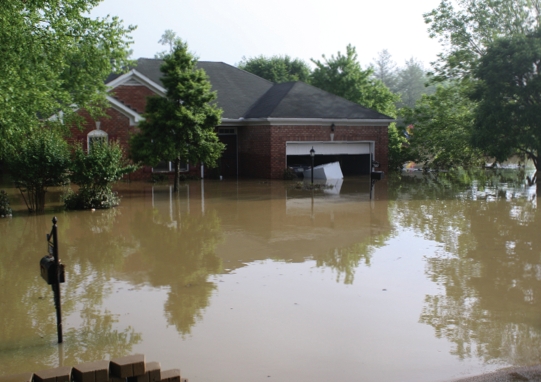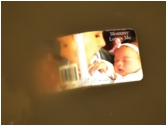The woman who called Vanderbilt’s Flood Recovery and Coordination Center was clear about her situation. Her
house, she said, was uninhabitable.
She reported that everything in her garage was a total loss, and that in her
house she had lost walls, roof, subfloors and carpets, kitchen table and some
clothes and shoes. She was relying on family and friends for immediate help,
and was hoping for some future help from FEMA, but wasn’t sure about that yet.
Then she said this, about any help that her employer, Vanderbilt, might be
prepared to offer: “I want to make sure the people that lost much more than me to benefit from
things before I receive anything.”
The spirit of Nashville that was on display through the catastrophic flooding on
May 1 and 2—neighbor helping neighbor, a selfless sense of sacrifice, a willingness to pitch
in and get started with the cleanup, while also welcoming help—was also on display at Vanderbilt, which, is, after all, Nashville’s largest private employer.
As it became apparent that catastrophic flooding was happening all over the
region as more than 13 inches of rain fell in two days, Vanderbilt first
activated its Incident Command Center to deal with flooding in the basements of
some buildings and to make sure that patients would be cared for and that
clinical areas were adequately staffed through the disaster.
And then, over the next few days, the immediate threat to Medical Center
operations faded, and it became swiftly apparent that the flood had affected a
staggering number of Vanderbilt’s family personally.
About 70 Vanderbilt employees reported that their residence was totally
destroyed in the flood; almost 300 reported, in the first days after the flood,
that their residence was uninhabitable but salvageable; and more than 500
others reported having a livable residence with damage exceeding $5,000.
The Flood Recovery and Coordination Center, with representation from many parts
of the University, took over the Incident Command Center and began
simultaneously gathering information and communicating University and community
flood news to the Vanderbilt community.
In order to gather information, the Employee Needs Assessment Survey was created
using the University’s own Redcap survey tool. This allowed both employees and supervisors to report
about the flood’s impact on hundreds of employees. Volunteers began phoning back some of the
most affected individuals to assess need and help match those needs with
available support.
At the same time, the flood website www.vanderbilt.edu/flood was established and
became the clearinghouse for both University and community information about
the flood. Over the next two weeks, the site would have more than 125,000 hits.
Special flood editions of the electronic publications MyVU and MyVUMC were
produced, highlighting each day’s news and developments.
And especially in those early days the news and developments came fast:
• University leaders decided to offer a disaster pay benefit that would provide
up to two weeks paid leave to faculty, staff and trainees whose personal
residences were destroyed or otherwise rendered uninhabitable on May 1-2. The
paid time off is over and above accrued vacation or personal time.
• An online Vanderbilt Flood Relief Fund was established. All monies donated are
tax deductible; to give, visit: www.vanderbilt.edu/flood/
• A Flood Relief Swap Meet was held May 6 and 7, allowing items such as clothing,
housewares, and cleaning supplies to be supplied to flood victims free of
charge.
• A free online classifieds page allowed those with items to share to list those,
and those in need to be matched to the items.
• Vanderbilt Employees’ Credit Union stepped up to offer special flood relief loans, payment extensions
on existing credit union loans; and appliances loans up to $5,000.
• Work/Life Connections-EAP offered help to individuals through its Employee
Hardship Fund, and at the same time began offering counseling and referral for
those affected by the flood. The number to call is 936-1327.
There were countless examples of small (and large) unofficial acts of Vanderbilt
people helping each other and helping their communities.
In this issue are a few examples of the flood’s impact on Vanderbilt and its employees. This is not in any way meant to be
comprehensive, but in these stories we begin a mosaic of Vanderbilt’s story and Nashville’s story of those days when the rain came and the water rose.




